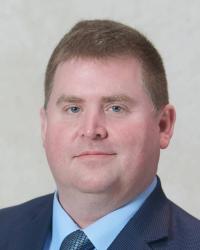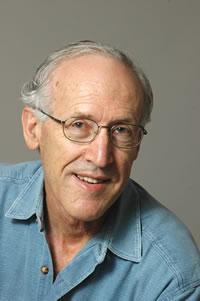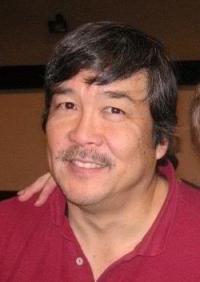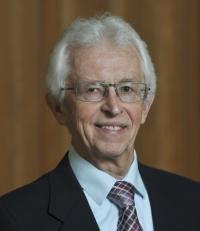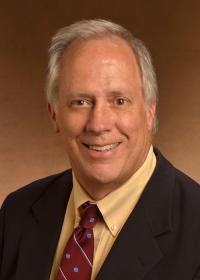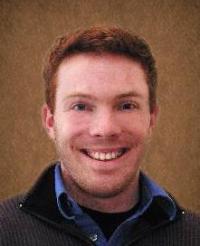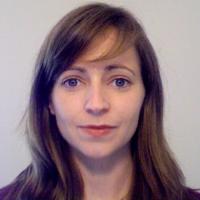Spring 2015 Colloquium Series
The International Commission on Radiological Protection: Organisation, Programme of Work, and Efforts related to the Fukushima Daiichi Accident
SPEAKER: CHRISTOPHER CLEMENT SCIENTIFIC SECRETARY INTERNATIONAL COMMISSION ON RADIOLOGICAL PROTECTION DATE/TIME: MON, 05/04/2015 – 4:00PM TO 5:00PM LOCATION: 3105 ETCHEVERRY HALL Spring 2015 Colloquium Series Abstract: The mandate of the International Commission on Radiological Protection (ICRP), established in 1928, is to advance for the public benefit the science of radiological protection, in particular by providing recommendations and guidance.…
Read MoreNew Design Approaches for Improving Sustainability of Nuclear Energy
SPEAKER: PROFESSOR EHUD GREENSPAN DEPARTMENT OF NUCLEAR ENGINEERING UNIVERSITY OF CALIFORNIA, BERKELEY DATE/TIME: MON, 04/27/2015 – 4:00PM TO 5:00PM LOCATION: 3105 ETCHEVERRY HALL Spring 2015 Colloquium Series Abstract: Research activities ongoing in the Advanced Reactor Design and Fuel Cycle Analysis Group of UC Berkley will be reviewed. The group research thrust is to improve the sustainability of nuclear…
Read MoreSecurity Dilemma in South Asia: Building Arsenals and Living with Distrust
SPEAKER: BRIGADIER GENERAL FEROZ HASSAN KHAN (R) NAVAL POSTGRADUATE SCHOOL DATE/TIME: MON, 04/20/2015 – 4:00PM TO 5:00PM LOCATION: 3105 ETCHEVERRY HALL Spring 2015 Colloquium Series Abstract: *Please note that this talk will not be recorded* India and Pakistan are engaged in a subtle strategic competition and a gradual arms race where technological innovations, military modernizations, and growing nuclear…
Read MoreTime Correlated Particle Detection for the Assessment of Special Nuclear Material
SPEAKER: LESLIE F. NAKAE, PH.D. STAFF PHYSICIST, NUCLEAR AND CHEMICAL SCIENCES DIVISION LAWRENCE LIVERMORE NATIONAL LABORATORY DATE/TIME: MON, 04/13/2015 – 4:00PM TO 5:00PM LOCATION: 3105 ETCHEVERRY HALL Spring 2015 Colloquium Series Abstract: The low natural background rates and the penetrating nature of neutron radiation makes neutron detection a good method for quantifying and accounting for large amounts of…
Read MoreDoomed to cooperate: How American & Russian nuclear scientists joined forces to mitigate some of the greatest post-Cold War dangers
SPEAKER: DR. SIEGFRIED S. HECKER CENTER FOR INTERNATIONAL SECURITY AND COOPERATION, STANFORD UNIVERSITY DATE/TIME: MON, 04/06/2015 – 4:00PM TO 5:00PM LOCATION: 3105 ETCHEVERRY HALL Spring 2015 Colloquium Series Abstract: Nuclear risks changed dramatically when the Soviet Union collapsed at the end of 1991. Suddenly the world was threatened more by Russia’s weakness than its strength. Never before had…
Read MoreScience Basis for Design of High Performance Radiation-Resistant Materials in Advanced Nuclear Energy Systems
SPEAKER: STEVEN J. ZINKLE, PH.D. GOVERNOR’S CHAIR PROFESSOR NUCLEAR ENGINEERING DEPARTMENT UNIVERSITY OF TENNESSEE, KNOXVILLE DATE/TIME: MON, 03/30/2015 – 4:00PM TO 5:00PM LOCATION: 3105 ETCHEVERRY HALL Spring 2015 Colloquium Series Abstract: High performance structural materials are important for the satisfactory operation of existing fission reactors that provide nearly 20% of the electricity in the US, and are even…
Read MoreORNL-SINAP FHR CRADA Colloquium
SPEAKER: DAVID HOLCOMB, PH.D., ORNL KUN CHEN, PH.D., SINAP DATE/TIME: MON, 03/09/2015 – 4:00PM TO 5:00PM LOCATION: 3105 ETCHEVERRY HALL Spring 2015 Colloquium Series Abstract: ORNL-SINAP FHR CRADA Colloquium Joint Presentation by David Holcomb (ORNL) and Kun Chen (SINAP) The Chinese Academy of Science’s (CAS) Shanghai Institute of Applied Physics (SINAP) and the US Department of Energy’s (DOE)…
Read MoreFrontiers of Medical Physics Research at UCSF (and a Sneak Peek of the UCB-UCSF Medical Physics Program)
SPEAKER: J. ADAM M. CUNHA, PH.D. ASSISTANT PROFESSOR IN RESIDENCE DEPARTMENT OF RADIATION ONCOLOGY UNIVERSITY OF CALIFORNIA, SAN FRANCISCO DATE/TIME: MON, 03/16/2015 – 4:00PM TO 5:00PM LOCATION: 3105 ETCHEVERRY HALL Spring 2015 Colloquium Series Abstract: With branches in basic science research, diagnostic medical imaging, and therapeutic medical practice, medical physics is a unique field that brings together science,…
Read MoreNuclear Power in the Broader Climate and Energy Debate
SPEAKER: JESSICA LOVERING, M.S. SENIOR ENERGY ANALYST THE BREAKTHROUGH INSTITUTE DATE/TIME: MON, 03/02/2015 – 4:00PM TO 5:00PM LOCATION: 3105 ETCHEVERRY HALL Spring 2015 Colloquium Series Abstract: Jessica Lovering will highlight the work she’s done over the past three years at the Breakthrough Institute – a paradigm-shifting environmental think tank – to engage the environmental community around the benefits…
Read MoreLow Energy Nuclear Physics Research at LLNL
SPEAKER: PROF. DR. J.T. BURKE NUCLEAR AND PARTICLE PHYSICS GROUP NUCLEAR AND CHEMICAL SCIENCES DIVISION LAWRENCE LIVERMORE NATIONAL LABORATORY DATE/TIME: MON, 02/23/2015 – 4:00PM TO 5:00PM LOCATION: 3105 ETCHEVERRY HALL Spring 2015 Colloquium Series Abstract: The low energy nuclear physics program at LLNL consists of a myriad of accelerator based and table top experiments. Studies include nuclear structure,…
Read More